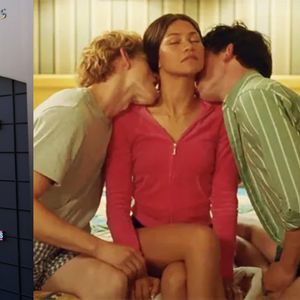In Nazi Germany,
some gay men were castrated and prosecuted under
draconian laws prohibiting homosexuality. Others were
subjected to crude medical experiments designed to
''correct'' their sexual orientation. Gay men in
concentration camps were singled out with distinctive pink
triangle badges and assigned backbreaking labor that often
killed them.
A traveling
exhibit from the United States Holocaust Memorial Museum
uses photographs, documents, and artwork to chronicle
the Nazis' arrests and persecution of tens of
thousands of gay men from 1933 to 1945.
The exhibit, on
display through the end of the month at the University of
Rhode Island, gives voice to what its curator describes as
''one of the lesser-known stories of the Nazi era.''
''You could
substitute the word 'homosexual' and put in any minority
group and see a story of how easy it is to persecute
somebody,'' said curator Edward J. Phillips, also the
acting director of the museum's division of
exhibitions.
''It still serves
as an example of how easy it is to get the wheels of
persecution in motion and follow through with it,'' he
added.
The exhibit,
''Nazi Persecution of Homosexuals 1933-1945,'' has been on
the road for about five years, largely at college campuses.
It is scheduled to travel this fall to the University
of Wisconsin-Madison.
Phillips said it
reflects the Washington museum's goal to be as inclusive
as possible in discussing victims of the Nazis, which
include most notably the 6 million Jews killed in the
Holocaust. Gays, Jehovah's Witnesses, Soviet prisoners
of war, and gypsies were among the groups who were
also persecuted.
About 100,000
German men were arrested under a sweeping antigay law, and
roughly half were convicted and sent to prison, according to
the exhibit. Between 5,000 and 15,000 were sent to
concentration camps, where many died from starvation,
beatings, exhaustion, and murder.
The Nazis
regarded gay men as a socially deviant subclass whose sexual
orientation threatened the elite and masculine Aryan race
they sought to establish. A diagram included in the
exhibit likens homosexuality to a contagious infection
that could be spread among men by seduction.
Sexual
relationships between women, already regarded as
second-class citizens, were not criminalized, and
lesbians were generally seen as less of a cultural
threat, Phillips said.
The exhibit
begins just before the Nazis rose to power, when an
estimated 1.2 million gay men lived in Germany and a
gay culture flourished in nightclubs and cafes.
But after Hitler
took power, the Nazis began shuttering gay clubs, and in
1934 the Gestapo asked local police departments to compile
lists of men believed to be gay.
A law known as
Paragraph 175 that had previously prohibited ''unnatural
indecency'' between men was reworked to dramatically expand
the range of illegal behaviors and, by 1938, even a
perceived wayward glance or touch could be interpreted
by the courts as criminal.
''There was such
an open sense of sexuality right beforehand. It took
very little for that to fall apart,'' said Judith Tolnick
Champa, director of the URI Fine Arts Center
Galleries, which is hosting the exhibit.
In 1943, SS chief
Heinrich Himmler approved a medical experiment designed
to ''correct'' gay men of their sexual orientation. The
experiment involved inserting capsules of testosterone
into the groins of 12 prisoners at the Buchenwald
concentration camp. Two men died from complications of
the surgery, the exhibit says.
A highlight of
the exhibit is a series of published lithographs by
Richard Grune, a gay artist who was arrested and sent to a
concentration camp. His works, with titles like
''Death Slide to the Crematorium in Concentration Camp
Flossenburg'' and ''Undernourished Prisoners in the
Bath,'' offer unflinching depictions of prisoners as
exhausted, skeletal, and tortured.
One light moment
is a satirical cartoon poking fun of Ernst Rohm, the gay
leader of the Nazi Storm Troopers. The 1933 cartoon in an
anti-fascist newspaper shows Rohm walking past a line
of soldiers focusing on their backsides with the
punchline: ''Rohm Inspects the SA Parade.''
The gay victims
of the Nazis were overlooked for years and did not
receive formal acknowledgment in Germany until a 1985 speech
by the then-president of West Germany, the exhibit
says. However, memorials to the gay victims have been
developed in parts of Europe and one is being created
in Berlin. Paragraph 175 has been abolished, and the German
parliament in 2002 pardoned the men convicted under it.
(Eric Tucker, AP)



















































































